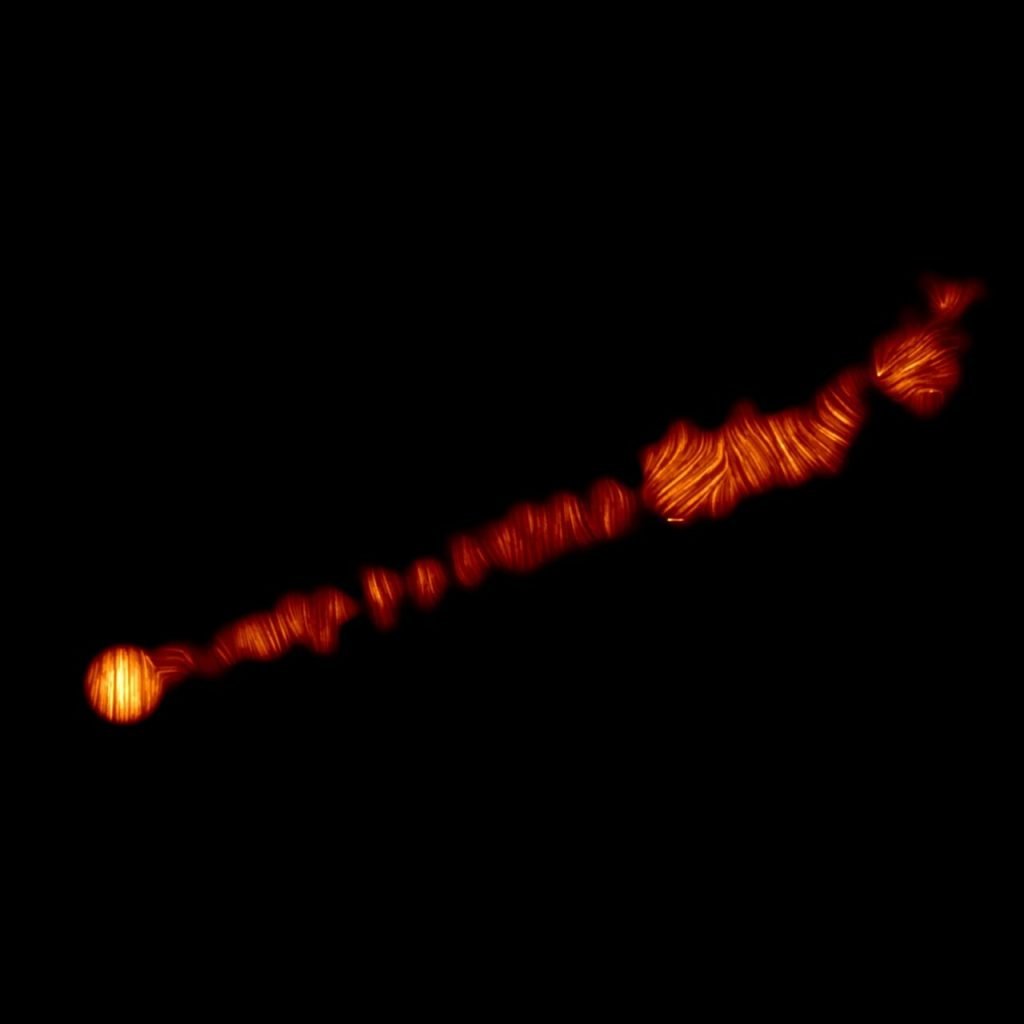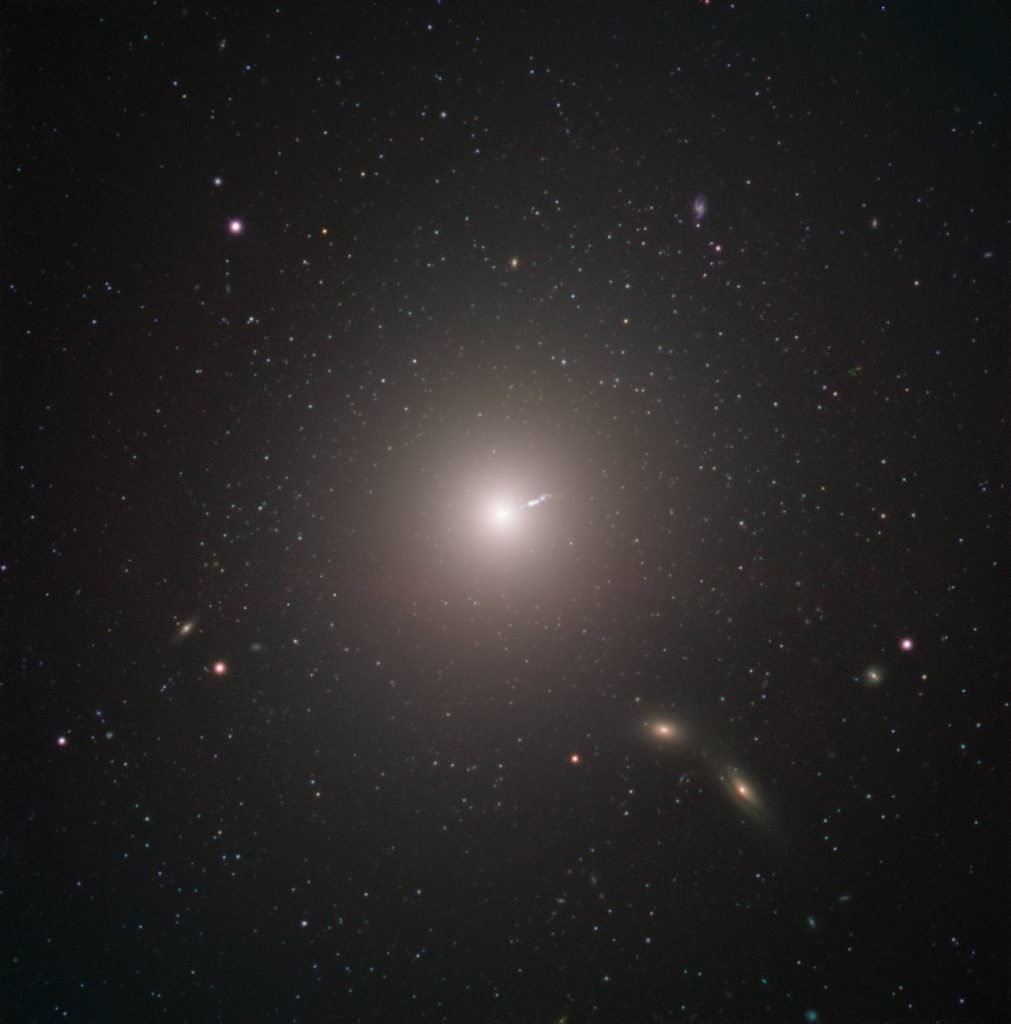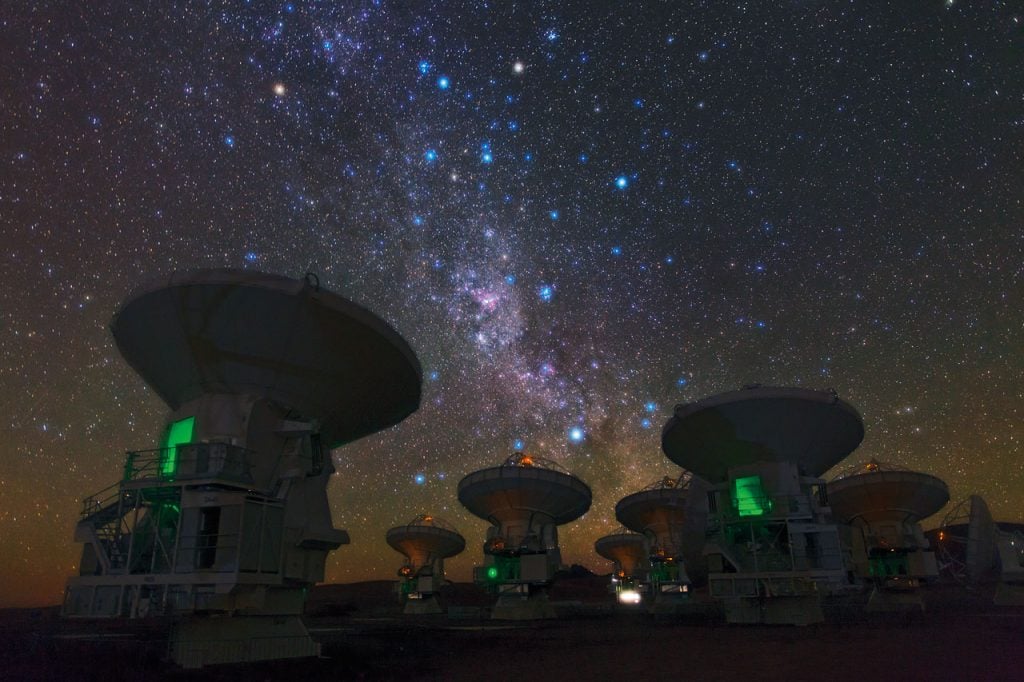Art & Tech
Astronomers Have Captured the Most Detailed Photo of a Black Hole Ever—See the Magnetic Fields That Power It Here
The new image was taken two years after the same astronomers captured the first photo of a black hole.

The new image was taken two years after the same astronomers captured the first photo of a black hole.

Sarah Cascone

Two years ago, astronomers managed to photograph a black hole for the very first time. The team behind the Event Horizon Telescope project was awarded the Breakthrough Prize—known as the Oscars of science—for their effort, and New York’s Museum of Modern Art acquired the image in the form of an inkjet print.
Now, the same astronomers have captured the most detailed photograph to date of a black hole, one of the universe’s most enigmatic features, which was once thought to be unobservable.
Seen in polarized light, the fuzzy ring of light in the original image is now in focus, with crisp lines swirling in toward the center of what appears to be a bottomless pit, sucking in anything and everything within its grasp.
“It’s like putting on a pair of polarized sunglasses on a bright sunny day—all of a sudden you can see what’s going on,” astronomer Sheperd Doeleman of the Harvard-Smithsonian Center for Astrophysics told the New York Times.

The Event Horizon Telescope was designed to capture images of a black hole. The image shows the light around the black hole’s boundary. Image courtesy of the Event Horizon Telescope.
A black hole is a field of matter so dense that not even rays of light can escape its gravitational pull. But as the black hole inexorably draws in gas, dust, and stars, some light is actually propelled outward in jets of energetic particles.
“This jet process is totally amazing—something the size of our solar system can shoot out a jet that pierces through entire galaxies and even galaxy neighborhoods,” Event Horizon Telescope team member Sara Issaoun told IGN.
The new image shows the black hole’s vortex, and the magnetic field lines at its inner edge, illustrating how the magnetic field both feeds the black hole’s insatiable hunger and powers the intergalactic fireworks show that surrounds it.

This image shows the jet in the M87 galaxy in polarized light. It is 6,000 light-years long. Image courtesy of ALMA (ESO/NAOJ/NRAO), Goddi et al.
“The main finding is that we not only see the magnetic fields near the black hole as expected, but they also appear to be strong. Our results indicate that the magnetic fields can push the gas around and resist being stretched. The result is an interesting clue to how black holes feed on gas and grow,” Jason Dexter, a professor at the University of Colorado Boulder, told Space.com.
“We are now seeing the next crucial piece of evidence to understand how magnetic fields behave around black holes, and how activity in this very compact region of space can drive powerful jets that extend far beyond the galaxy,” said Monika Mościbrodzka, coordinator of the EHT Polarimetry Working Group, in a statement.

The galaxy Messier 87, in the constellation Virgo, as capture by the European Southern Observatory’s Very Large Telescope. Photo courtesy of the European Southern Observatory.
The findings from the new image are the subject of three papers published last week in the Astrophysical Journal Letters, two by the Event Horizon Telescope Collaboration and one by lead author Ciriaco Goddi of Radboud University in the Netherlands.
This black hole captured by the telescope lies 55 million light-years away, at the heart Messier 87, a supergiant elliptical galaxy in the constellation Virgo. At 6.5 billion times bigger than our sun, it is unimaginably supermassive—the surrounding circular field of electrified gas or plasma captured in the image measures about 30 billion miles across, or four times Pluto’s orbit.

The Atacama Large Millimeter/submillimeter Array (ALMA), part of the Event Horizon Telescope Collaboration, set against the Milky Way. Photo by European Southern Observatory Photo Ambassador Babak Tafreshi.
Capturing the image was a global effort. The Event Horizon Telescope collaboration is powered by eight ground-based radio telescopes in Chile, Mexico, Spain, Hawaii, Arizona, and the Antarctic, overseen by an international team of radio astronomers that synchronize their observations by atomic clock. Together, the sites essentially create a planet-sized telescope.
The project’s name comes from the point of no return around a black hole. Beyond the event horizon, no light or matter can escape.
Watch a video approaching the Messier 87 galaxy black hole below.